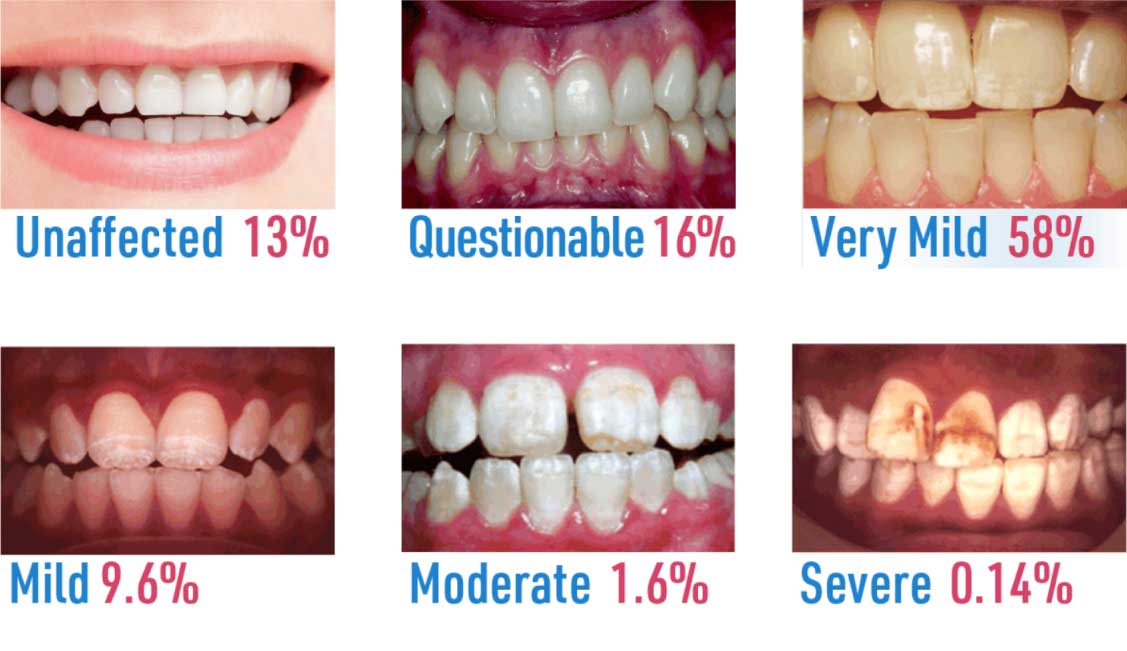

HHS Secretary, Robert F. Kennedy, Jr. says that fluoride is connected to cancer, IQ loss, thyroid disease, arthritis, bone fractures, bone cancer, neurodevelopmental disorders, and other health problems. The MAHA report that came out in February of 2025 demonstrated "a statistically significant association between exposure to fluoride above recommended levels and reduced IQ levels in children." As a result, the Environmental Protection Agency (EPA) is currently conducting additional research into the federal drinking water standard.
Following RFK Jr.’s lead, a few states and some counties have begun to make changes. In March, Utah became the first state to ban the fluoridation of drinking water, followed by Florida. Months ahead of the ban, Florida’s Surgeon General had released a statement warning against the use of fluoride, and residents were speaking up at commissioner meetings—such as this Bartow Water Treatment Plant operator who said:
"We've been calling it fluoride… To me it's hydrofluorosilicic acid… to me it's acid. It's not fluoride. It's acid. You are putting acid in your water that will dissolve concrete, but you want us to drink it."

At the same meeting, another water treatment operator from Gainesville said, “the hydrofluorosilicic acid used to add fluoride "terrifies" him, requiring gloves and extensive coverage to prevent it from touching his skin.
Florida Governor Ron DeSantis, upon announcing he would sign a bill for the ban, told reporters:
“Jamming fluoride in the water supply… [Fluoride] is essentially a forced medication. At the end of the day, we should all agree that people deserve informed consent."
Louisiana, though no ban yet, has had several recent bills with warnings around fluoride, as has Massachusetts—one of which states:
“Based on... ill effects from even low-dose fluoride exposure for a significant portion of the population including pregnant women, bottle-fed babies, young children, the elderly and many in fragile health; conflicting federal regulations…; the questionable ethics of medicating…; and concerns about the... contaminants in our environment, ... Massachusetts bans the addition of any fluoride water products to any and all public water supplies..."
Tennessee, not quite as aggressive, has taken a step by failing to pass a bill that would have maintained their current fluoride levels.
County Commissioners in Union County, North Carolina, were ahead of these states, however. In February of 2024, they voted to stop adding fluoride at their local water treatment plant.
Other Countries: 97% of western Europe have rejected fluoridation. According to the British Fluoridation Society, there are more people drinking artificially fluoridated water in the United States than all other countries combined.
So far... crickets. At least in the Ottawa County area.
In Michigan, fluoridation is a local decision. About 89% of Michigan residents have access to fluoridated water. There are some cities in Michigan that have chosen not to fluoridate including Baldwin, Benzonia, Cadillac, Harrisville, Leelanau and Three Rivers. The CDC maintains a full list broken down by county of which townships fluoridate.
Ottawa County townships mostly get their municipal water from either the City of Grand Rapids, the City of Wyoming, City of Grand Haven, or City of Holland. And where do these cities stand on fluoride?
These local filtration plants are adding fluoride and maintaining the standard level of 0.7 milligrams per liter. Townships purchasing water from these plants are not given the option of whether or not to have fluoride in the water.
In Ottawa County, the City of Grand Rapids supplies drinking water to Allendale, Coopersville, and portions of Grand Haven and Robinson Township. As backing for its decision to fluoridate, the City of Grand Rapids’ website points to the U.S. Environmental Protection Agency (EPA), the stance of the previous U.S. Department of Health and Human Services (HHS), and the Michigan Department of Environment, Great Lakes, and Energy (EGLE).
However, the EPA was sued in September of 2024. The EPA lost, with the court finding that “fluoridation of water at 0.7 milligrams per liter—what is currently considered 'optimal' in the U.S.—poses an unreasonable risk of reduced IQ in children…” According to Moms Against Fluoridation, this ruling affects every entity taking guidance from the EPA.
The information from the EPA, HHS, and EGLE that the City of Grand Rapids is using to support its decision to fluoridate, appears to be outdated and, according to the current Department of HHS, incorrect.
The local filtration plants are owned by the cities and the decision to fluoridate rests with the city councils. Residents pay for their water without having a say in what is being done to that water.
There is a compiled list of 50 reasons to reconsider fluoride. But let's focus on the very reason local and state governments across the United States consistently have chosen to fluoridate: teeth.
Most people far surpass the amount of daily fluoride that was decided was safe. Fluoride comes at us through residential city water, restaurant water, some bottled water, toothpaste, processed food made with fluoridated water, and our shower heads. All in the name of protecting our teeth from decay.
In addition to the health concerns from fluoride already mentioned, there is a risk to teeth.
That risk is called fluorosis, a defect of tooth enamel caused by too much fluoride intake during the first 8 years of life. As of 2016, two-thirds of U.S. children had at least mild fluorosis.

For those with city water who want to cut down on their fluoride intake:
• Opt for spring water which generally contains very low levels of fluoride
• Check fluoride content of bottled water brands
• Look for a water filter that removes fluoride, such as reverse osmosis systems
• Distill your water
• Don’t let children swallow fluoride toothpaste
• Avoid fluoride treatments at the dentist
• Avoid processed food
• Consider other ways to avoid fluoride
How did fluoride come to be added to drinking water? In January of 1945, Grand Rapids, Michigan—of all places—became the first city in the world to add fluoride to a public water system.
The effort was sponsored by the US Surgeon General and the National Institute of Health with the purpose was to study the link between tooth decay and fluoride.

Side note to ponder: In October of 1944, a few months before Grand Rapids first added fluoride, L. Pierce Anthony, editor of the Journal of the American Dental Association, wrote in opposition to fluoridating water, calling fluoride a “toxic substance.” He pointed out that long-term impacts on bone and tissue weren’t known and that there “was evidence that drinking water with as little as 1.2 to 3.0 parts per million of fluoride had caused osteosclerosis, spondylosis, osteoporosis, and goiter.” And then, two months later, Anthony wrote a retraction saying that his original editorial had been misinterpreted.
And, coincidentally, the same year Grand Rapids began fluoridating, the Food and Nutrition Board set the guideline recommending people drink eight glasses of water a day.
According to Jaime Fleming, the Superintendent of the City of Wyoming Drinking Water Plant, a federal requirement to universally end fluoridation would supersede local policy.
Until that happens, in addition to there being a court ruling against the EPA that local city councils may pay attention to, there’s an organization called Stand for Health Freedom which provides a toolkit. The kit is for empowering residents and local leaders with “knowledge and resources needed to challenge and end water fluoridation practices in their localities.”
Whether you are for fluoride or against it, as with anything else used with the intent of medicating, it all comes down to informed consent.

Krista Yetzke is a native of Ottawa County. A jeep-driving, guitar-playing wife, mom, and everyday adventurer, Krista was raised on the love of Jesus, the great outdoors, the arts, the value of frugality, and the beauty of food as medicine.